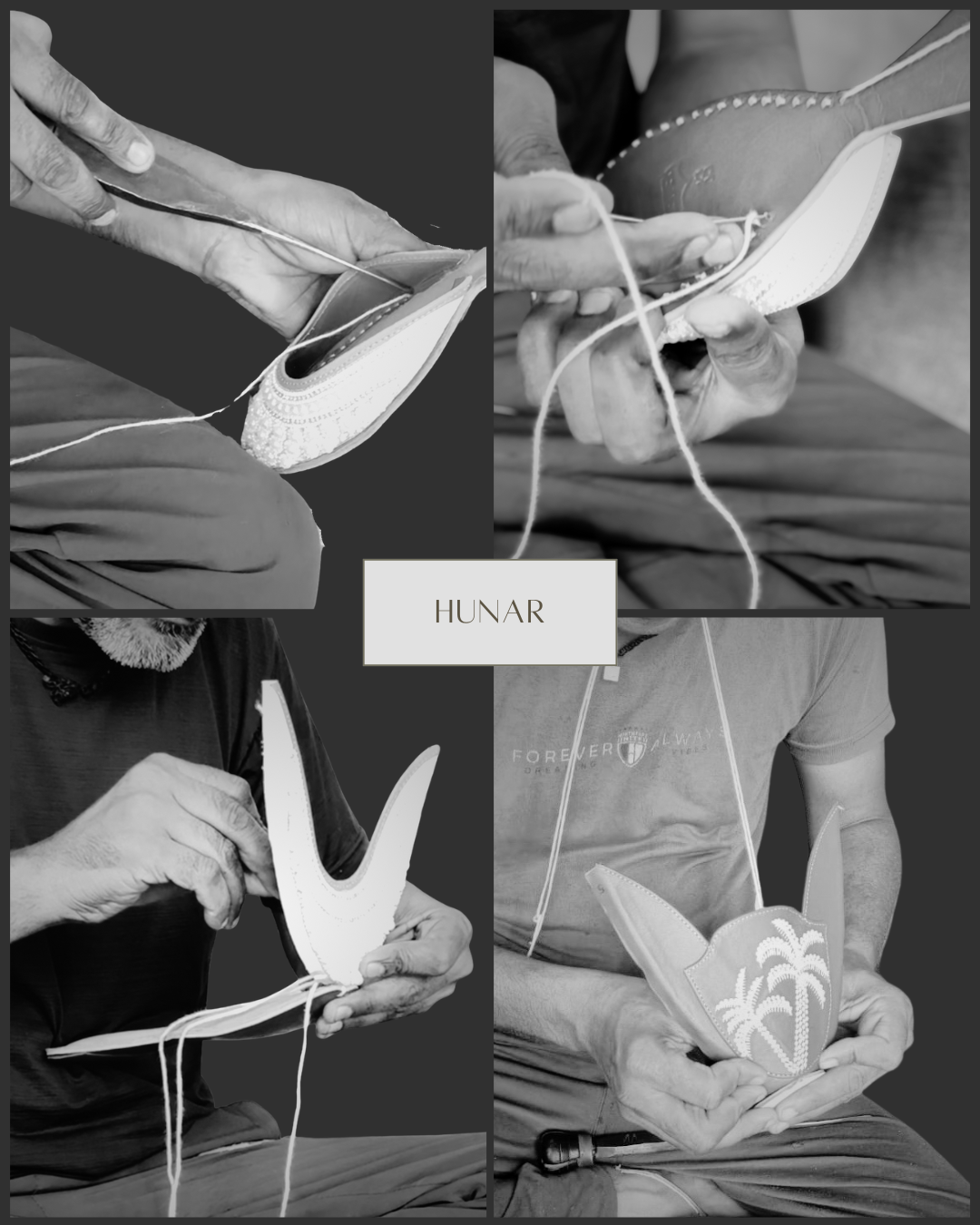About us
Hunar comes from the Urdu word for “skill”- a tribute to the artistry behind every handcrafted piece we create.
Our products are made by master artisans across the world, many of whom have inherited their craft through generations. With every stitch, they preserve traditions that resist automation and celebrate individuality.
Each pair is unique - not just in pattern, but in spirit. We don’t believe in fast fashion. We believe in slow, soulful craftsmanship that blends heritage with everyday comfort.
At Hunar, you’re not just buying shoes.
You’re walking in a story.
You’re carrying centuries of talent forward.
Origins of Juttis
A Jutti is a distinctive slip‑on shoe that dates back to the 12th century, when pointed toes were fashionable. During the Mughal era, slip‑on shoes with curved toes became popular at court and were often covered in gold and silver thread. Artisans from Rajasthan later migrated to Punjab, establishing workshops in cities like Patiala; Juttis were once status symbols for royalty.
Craft Process
Crafting a jutti is labor‑intensive. Families split tasks: tanners prepare hides, cutters shape pieces, and women embroider the uppers.
- Wooden templates guide patterns for the shoes.
- Layers of leather or synthetic sheet are glued and hammered together using tools.
- The upper, back and sole are hand‑stitched with thick cotton thread; a single shoe requires 200–400 stitches.
- Uppers are embellished with colorful threads, beads and mirrors, then polished and flattened under a heavy stone.
